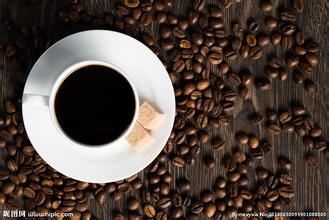Introduction to the characteristics of seven major producing areas of manor flavor and taste in Kenyan coffee producing areas
Kenyan coffee beans
This is the earliest method of classification and is still in use in many parts of Brazil. The method of identification is to randomly take 300 grams of samples and put them on black paper, because black paper can best avoid reflection. Then, examined carefully by the professional appraiser, find out the defective beans in the sample, and accumulate different scores according to the types of defects. For example, one black bean, one pebble, five big pebbles, five broken beans, five pest beans, two sour beans, one dry peel, two middle dried peels, three small dried peels, five unshelled beans, three shell beans, and so on. After identification, the grade is NY2~NY8 according to the accumulated defect score, and there is no NY1. If you want to buy first-class (NY1) Brazilian beans, it will make a joke. Indonesian coffee beans are also classified in this way, mainly divided into six grades, namely Gr1~Gr6. The same is true of Ethiopia, with the highest level being Gr2.
◎ is highly classified by place of origin
Generally speaking, in alpine areas, due to the cold climate and the slow growth rate of coffee, the density of raw beans is higher and the texture is harder, and the more mellow and aromatic the coffee is, and it has a supple sour taste; on the contrary, the density of raw beans is smaller and the texture is less hard, then the quality of coffee is worse, so there are also people who classify it as "hardness". This classification method can be divided into the following categories: extremely hard beans, height of about 4500 to 5000 feet, referred to as SHB; high hard beans, height of about 3000cm 4500ft, referred to as GHB; hard beans, height of about 2000,000ft, referred to as HB; Pacific coastal area, height of about 984ft 3280ft, referred to as Pacific. Guatemala, Costa Rica, El Salvador, Mexico, Honduras and Haiti are all classified in this way.
Jamaica is divided into three grades by production region: BM (Blue Mountain)\ HM\ PM is sour, bitter, sweet and fragrant. The price of BM is 1.5 times that of HM, and the price of HM is 2.5 times that of other products.
In order to ensure the quality, any grade of beans must have the following conditions: consistent harvest, consistent shape and size, and good taste.
African Kenyan high-quality Arabian species with strong sour taste and flavor deep-fried Kenyan AA German favorite coffee
Ethiopia is graded according to the number of beans mixed: G1~G8 (of which the G5 owes 46,100 points per 300g) has a good sour and aromatic smell (Ozhute coffee has a strong sour taste) medium to deep-fried Harald BG (Balu Dukulin / LB) "Ozshut Ethiopia" is mainly exported to Europe.
The Asian Yemeni Arabian (moja coffee) has a soft sour taste and characteristic sweetness to deep-fried Galtai Mattar.
Mocha coffee has a unique wine taste and is the most popular after-dinner coffee. at the same time, it is an indispensable raw material for mixed coffee and is often mixed with Brazilian and Colombian coffee.
Indonesia in Southeast Asia is 90% bitter and rich in flavor, with sweet deep-fried Sumatra mantenin.
Sumatra is famous for its Mantenin, which has a smooth and special taste, and Java Arabia in Java has a good sour taste. It is the preference of the Dutch, the big grain "Karosi" in Sulawesi, and "Durajia" in the Durajia area at an altitude of 1200 meters in the southwest.
The Hawaiian archipelago has a strong sour taste, rich aroma, and a tropical drink feeling of moderate to deep frying in Hawaii, but the cultivation of coffee in Hawaii is mainly started by Japanese immigrants.

Important Notice :
前街咖啡 FrontStreet Coffee has moved to new addredd:
FrontStreet Coffee Address: 315,Donghua East Road,GuangZhou
Tel:020 38364473
- Prev

Introduction to grinding scale of Kenyan coffee brewing classification characteristics and flavor description treatment method
Dry Kenyan coffee beans: strong citrus fruit aromas, mango and grape acidity: bright and mild, citric acid aromas. The palate has obvious aromas of rum, bayberry or BlackBerry fruit, plus tangerine peel or grape finish. Body: pure, unlike ordinary African coffee, the whole is clean, bright, warm sunshine and summer breeze. The sweetness of this bean is very introverted, like
- Next

Introduction to the method of Manor Grinding and Calibration for the Flavor and Taste quality of Sunshine Ye Jia Xuefei
Yega Chefe Coffee has an extremely complex aroma and shows an extremely excellent taste that is difficult to describe. In general, the dry aroma of Yega Chuefei is full of fruit, with strong aromas of dried fruit, strawberry, mango and apricot jam. Wet fragrance is like sweet syrup, like sticky apricot juice, wrapped in plain honey or chocolate. Entrance. No.
Related
- Detailed explanation of Jadeite planting Land in Panamanian Jadeite Manor introduction to the grading system of Jadeite competitive bidding, Red bid, Green bid and Rose Summer
- Story of Coffee planting in Brenka region of Costa Rica Stonehenge Manor anaerobic heavy honey treatment of flavor mouth
- What's on the barrel of Blue Mountain Coffee beans?
- Can American coffee also pull flowers? How to use hot American style to pull out a good-looking pattern?
- Can you make a cold extract with coffee beans? What is the right proportion for cold-extracted coffee formula?
- Indonesian PWN Gold Mandrine Coffee Origin Features Flavor How to Chong? Mandolin coffee is American.
- A brief introduction to the flavor characteristics of Brazilian yellow bourbon coffee beans
- What is the effect of different water quality on the flavor of cold-extracted coffee? What kind of water is best for brewing coffee?
- Why do you think of Rose Summer whenever you mention Panamanian coffee?
- Introduction to the characteristics of authentic blue mountain coffee bean producing areas? What is the CIB Coffee Authority in Jamaica?

